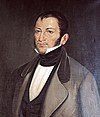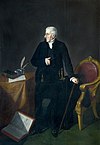
Provisional Government of Mexico

Supreme Executive Power of the Mexican Nation Supremo Poder Ejecutivo de la Nación Mexicana (Spanish) | |||||||||
|---|---|---|---|---|---|---|---|---|---|
| 1823–1824 | |||||||||
 Provisional territorial organization of Mexico | |||||||||
| Status | Provisional government | ||||||||
| Capital | Mexico City | ||||||||
| Common languages | Spanish | ||||||||
| Religion | Catholic Church (official religion) | ||||||||
| Government | Provisional government | ||||||||
| Head of state | |||||||||
• 1823–1824 | Nicolás Bravo | ||||||||
• 1823–1824 | Guadalupe Victoria | ||||||||
• 1823–1824 | Pedro Celestino Negrete | ||||||||
• 1824 | José Mariano Michelena | ||||||||
• 1824 | Miguel Domínguez | ||||||||
• 1824 | Vicente Guerrero | ||||||||
| History | |||||||||
• Overthrow of the monarchy | April 1, 1823 | ||||||||
• Disestablished | October 10, 1824 | ||||||||
| Currency | Real | ||||||||
| |||||||||
| Today part of | Mexico United States | ||||||||
The Supreme Executive Power (Spanish: Supremo Poder Ejecutivo)[1][2] was the provisional government of Mexico that governed between the fall of the First Mexican Empire in April 1823 and the election of the first Mexican president, Guadalupe Victoria, in October 1824. After Emperor Iturbide abdicated, the sovereignty of the nation passed over to Congress, which appointed a triumvirate, made up of Guadalupe Victoria, Pedro Celestino Negrete, and Nicolas Bravo, to serve as the executive, while a new constitution was being written.

During this period the government oversaw the transition of the nation from monarchy to a republic, abolishing all titles of nobility, changing the national symbols, and removing from power the remnants of the imperial government. Iturbide himself and his family were exiled to Europe, and when he attempted to return in July 1824, he was captured and executed.

A major challenge proved to be the multiple military revolts that flared up in the provinces, and in one case in the capital itself. The causes varied, ranging from agitation in favor of establishing a federation, anti-Spanish sentiment, and even efforts aiming at restoring the empire.

Elections for a new congress were held in October 1824, and the new legislature proceeded in the task of writing a new constitution, debates over the matter mainly being concerned with whether the new republic should take the form of a federation, or a centralized republic. The former faction triumphed, and the result was the 1824 Constitution of Mexico, and the Supreme Executive Power was replaced by the First Mexican Republic.

Background
Independent Mexico was originally a monarchy: "constitutional and moderate" according to the Treaty of Córdoba.[3] The new country adopted the name of the Mexican Empire.

The Plan of Iguala had provided for a Bourbon monarch to be placed on the Mexican throne, but when the offer was refused, a barracks revolt in the capital declared Agustín de Iturbide as emperor; congress, in search of stability and surrounded by Iturbide's military partisans, acquiesced. Iturbide was officially proclaimed Emperor of Mexico on May 18, 1822.[4] However, the Constitutional Empire soon found itself being torn by conflicts between the emperor and Congress. Deputies were imprisoned simply for expressing their disagreements with Iturbide and finally, Iturbide decided to abolish the Congress, establishing instead a National Junta subservient to him.[5]

The lack of a congress, the arbitrary nature of the emperor and the absence of solutions to the serious problems that the country was facing increased conspiracies to change the imperial system.[6] Antonio López de Santa Anna proclaimed the Plan of Casa Mata, and was later joined by Vicente Guerrero and Nicolás Bravo. Iturbide then was forced to reestablish the Congress and in a vain attempt to save the order and keep the situation favorable to his supporters, he abdicated the crown of the empire on March 19, 1823.[7]

The transition from a monarchy to a republic
On March 31, 1823, Congress officially abolished the executive as it had functioned under the empire since May 19, 1822.[8] In its place, was established a body known as the Supreme Executive Power, and chose to fill the office with a triumvirate made up of Nicolás Bravo, Guadalupe Victoria, and Pedro Celestino Negrete.[9] As the first two were not present in the capital at the time, José Mariano Michelena and José Miguel Domínguez were chosen to serve as substitutes in that capacity while the members of the triumvirate were unavailable.[10] José Ignacio García Illueca was named as the sole minister, holding all portfolios.[11]

On April 7, Congress concentrated on dealing with the abdication of Iturbide. The abdication was not officially recognized, as Iturbide's election was declared to have been forced upon congress by threat of violence, and hence the throne was not legally his in the first place. The debates in congress over this matter became very heated. When a deputy attempted to declare that his vote for the emperor, representing the wishes of his district, had been free and uncompelled, the chamber rose in hostile uproar.[12] Iturbide's coronation, titles of nobility, and hereditary succession were declared null and void. Nonetheless, he was granted an annual pension of 25,000 pesos on the condition that he would leave the country.[13] The Plan of Iguala and the Treaty of Córdoba which had established the empire, were declared null and void.[14]

On May 11, escorted by Nicolas Bravo, and supervised in his departure by Guadalupe Victoria at La Antigua, Iturbide and his family left the country on the British merchant frigate Rawlins, with Livorno as his destination.[15] Upon Bravo's return to the capital, the Executive named new ministers: Lucas Alamán to Interior and Exterior Relations, Francisco de Arrillaga to the Treasury, Pablo de La Llave to Justice and Ecclesiastical Affairs, and José Ignacio García Illueca to War and Marine.

Political prisoners were liberated,[16] Iturbide's council of state was abolished,[17] and a new Supreme Court was established.[18]

On July 19, 1823, Congress honored 11 deceased heroes who had fought for Mexican independence: Miguel Hidalgo, Ignacio Allende, Juan Aldama, Mariano Abasolo, José María Morelos, Mariano Matamoros, Miguel Bravo, Leonardo Bravo, Galeana, Jiménez, Mina, Pedro Moreno, and Rosales. Their names were ordered to be inscribed in gold over the congressional chamber, and monuments were ordered to be raised in their places of death. The remains which could be found were exhumed in order to hold a state funeral for them. In the aftermath of the ceremonies, a mob plotted to visit the tomb of Hernán Cortés in order to desecrate his bones, and the government had to send for the remains to be hidden and protected.[19]

The political opposition to Iturbide at this time also led to a change in the commemoration of Mexican Independence. The War of Mexican Independence went through multiple phases, not at all under the same leadership or with the same aims, and in 1821, it was Iturbide who had finally gained independence from Spain, leading to a commemoration of the matter on the anniversary of his army's entrance into Mexico City on September 27. However, with the fall of Iturbide, the commemoration of independence was moved to September 16, commemorating the Cry of Dolores that had begun the struggle for independence.[20]

Financial issues
| Executive Triumvirate[21][22][23] | ||
|---|---|---|

|

|

|
| Nicolás Bravo | Guadalupe Victoria | Pedro Negrete |
| March 31, 1823 – October 10, 1824 | ||
| Substitute Members | ||
|---|---|---|

|

|

|
| José Michelena | Miguel Domínguez | Vicente Guerrero |
| April 1, 1823 – October 10, 1824 | July 2, 1823 – October 10, 1824 | |
The insolvency of the government was one of the most pressing issues at hand. The state was nearly bankrupt and the provisional government chose to accept the debt inherited from the Spanish Vicerealty. On April 11, 1823, the government decreed an end to the printing of paper money. On June 27, 1823, a poll tax was established. Anticipating the unpopularity of the measure, two days later the executive published a public appeal, explaining that the government was facing a grave financial crisis, and that the poll tax was established as a matter of necessity. The government sought to reform the treasury, reducing the bureaucracy involved in the collection of taxes, and setting up a system of auditors.[24]

Loans were needed, and the government sent agents to England, which already had a reputation for sponsoring Latin American nations during the wars of independence. It was also assumed that granting loans to Mexico would give England a vested interest in the political success and independence of the Mexican nation.[25][26] On May 1, 1823, Congress approved the borrowing of £3,200,000 from Goldschmidt & Co.[27][28][29]

Three English commissioners by the name of Harvey, Ward and O'Gorman arrived in January 1824 in order to produce a report from the British government on the state of affairs in Mexico. The latter would stay as the first British consul to Mexico City.[30]

Loss of Central America and revolts against the government
Central America, known at this time as the Captaincy General of Guatemala had at first chosen to unite itself to the empire, and yet many were discontented with matters such as the difficulties in transport and communication with the capital, and the tariff and excise taxes that the Mexican authorities imposed upon the provinces. Brigadier Vicente Filísola was sent to Central America by Iturbide to garrison the region, and yet after the fall of the empire Filísola convened a Central American Congress on June 24, which on July 1 declared independence, founding the Federal Republic of Central America with only the province of Chiapas choosing to remain united to Mexico.[31]

The nascent Mexican Republic was also disturbed by several political uprisings against the national government. In April, news reached the capital that the governor of Texas had declared a rebellion in favor of restoring the empire. On May 12, the provincial deputation in Guadalajara passed a resolution nullify laws passed by the capital until a new congress was convened to establish a federation.[32] In San Luis Potosí Santa Ana, who had already led the movement to overthrow the empire, rose up and declared himself protector of the federal system. Santa Ana was captured and sent to the capital to answer for his conduct, however he was pardoned after his efforts were vindicated with the triumph of the federal system and subsequently sent to command the military in Yucatán. Congress, in order to accommodate the provinces, expanded the powers of the Provisional Deputations, giving them the power to appoint almost all government offices within their territories, and expressed support for the establishment of a federal system.[33]

To pacify Guadalajara, 2,000 men were sent under the command of Negrete and Bravo. Meanwhile, the third member of the executive, Victoria, was in Veracruz to prevent the influence of Santa Ana, in the wake of his rebellion in San Luis Potosí from creating another disturbance. This left the executive in the charge of the two substitutes, and so to fill in the missing member of the triumvirate, on July 2, 1823, congress raised up Vicente Guerrero as a third substitute executive. The expedition to Guadalajara was successful in detaching the province of Colima from the renegade authorities in Guadalajara.[34]

A revolt in Querétaro resulted in the execution of the ringleaders. Puebla tried to establish a legislature without the approval of Congress under the pretext that it needed to pass a protective tariff against foreign textiles to protect its own factories. The executive sent Guerrero to deal with the matter in Puebla and he also succeeded in putting down a rebellion in Cautla that was clamoring for the expulsion of the Spaniards.[35]

A more serious revolt occurred in January 1824 in the capital itself, being led by general José María Lobato. When the government learned of the matter Congress immediately refused to hear any of the rebel's demands lest they lay down their arms, and ordered all loyal troops to come to the defense of the legitimate government. The revolt subsequently melted away.[36]

In Guadalajara, the situation became so serious that on June 11, 1824, the executive had to send a second military expedition to pacify another revolt, this time containing substantial Iturbidist sentiment. The cause for Iturbide's restoration however, effectively ended in July 1824 when the ex-emperor himself, returned from his exile, and landed in Tampico, upon which he was subsequently tried by local authorities and executed in accordance with a bill of attainder that had been passed by congress on September 27, 1823.

Drafting a new constitution
| Cabinet of the Supreme Executive Power[37] | ||
|---|---|---|
| Office | Name | Term |
| Foreign and Interior Relations | José Ignacio García Illueca | April 2, 1823 – April 15, 1823 |
| Lucas Alamán | April 16, 1823 – April 23, 1823 | |
| Pablo de la Llave | April 24, 1823 – May 14, 1824 | |
| Lucas Alamán | May 15, 1824 – September 21, 1824 | |
| Juan Guzman | September 22, 1824 – October 10, 1824 | |
| Justice and Ecclesiastical Affairs | José Ignacio García Illueca | April 2, 1823 – June 6, 1823 |
| Pablo de la Llave | June 6, 1823 – January 25, 1824 | |
| Geronimo Torrescano | January 26, 1824 – April 20, 1824 | |
| Pablo de la Llave | April 21, 1824 – October 10, 1824 | |
| Treasury | José Ignacio García Illueca | April 1, 1823 – April 30, 1823 |
| Francisco de Arrillaga | May 2, 1823 – August 8, 1824 | |
| José Ignacio Esteva | August 9, 1824 – October 10, 1824 | |
| War and Marine | José Ignacio García Illueca | April 2, 1823 – July 11, 1823 |
| José Joaquín de Herrera | July 12, 1823 – March 11, 1824 | |
| Manuel Mier y Teran | March 12, 1824 – October 10, 1824 | |
On the May 21, 1823, elections were announced for a new congress whose term was scheduled to begin on October 31. Rules for the new election were published on June 17.[38] Congressional seats were allocated on a basis of one representative per 50,000 inhabitants, elected by manhood suffrage available to any man over the age of 18, and using the three-tiered system established by the Constitution of 1812, by which voters in each parish chose electors, who then met at the district level and chose electors for the province level, whom in turn finally voted for representatives to be sent to Congress.[39]

The new congress elected in late October was mainly federalist in composition. It first met on November 7, 1823, and soon divided itself into two main factions: the federalists, whose most prominent voice was Miguel Ramos Arizpe, and the centralists, whose most prominent voice was Servando Teresa de Mier. Through the minister of justice, the executive announced to the congress on November 14, that they must now set to work on answering the popular call to establish the government most suited for the nation. A constitutional committee headed by Arizpe, was commissioned with writing a constitutional draft, and on November 22, 1823, delivered the Constitutive Act (Spanish: Acta Constitutativa), with the fifth article declaring that Mexico adopts the republican, federal, popular, representative form of government,[40] and debate on the matter began on December 3.

Deputy Mier, argued that the act was proposing a constitution copied from the United States and unsuited to the political situation in Mexico. He reasoned that the American states were separate sovereign provinces that had federated to become stronger together, while the provinces in Mexico had never been independent political entities, and that federating them would split the nation apart, resulting in the exact opposite outcome that the Americans had sought through federation. Notwithstanding the opposition, the Acta Constitutativa was adopted on January 31, 1824, as a provisional constitution.[41]

Work on a full constitution began on April 1, 1824. A significant problem once a federation was agreed upon, was to now divide the nation into provinces that would not leave any province too powerful or too weak, a problem that was made worse by a lack of reliable statistical data. The president was to serve for four years, and the candidate who came in second was to assume the office of vice-president, a device that was copied from the United States.

Congress called for presidential elections in August 1824. Each state legislature would appoint two candidates, and the two who received the most votes from state legislatures would be elected as president and vice president. The results were announced on October 1, and by majority of 17 states, Guadalupe Victoria was elected president of the Republic.[42] Nicolas Bravo and Vicente Guerrero had tied for second place, and Congress chose in favor of Bravo, making him vice-president.[43]

On October 10, 1824, Guadalupe Victoria took office as the first president of Mexico.[44]

See also
References
- ^ "Manifiesto del Supremo Poder Ejecutivo". 500 años de Mexico en documentos. Retrieved October 5, 2010.
- ^ "31 de marzo de 1823". Gobierno Federal. Archived from the original on October 6, 2010. Retrieved October 5, 2010.
- ^ "24 de agosto de 1821. Se firman los tratados de Córdoba". Gobierno Federal. Archived from the original on September 21, 2010. Retrieved September 12, 2010.
- ^ Álvarez Cuartero, Izaskun; op. cit.; p. 266
- ^ "La Transición del Imperio a la Republica (1821–1823)". Estudios de Historia Moderna y Contemporánea de México. Archived from the original on January 17, 2011. Retrieved September 12, 2010.
- ^ Suárez y Navarro, Juan (1850). Historia de México y del general Antonio López de Santa Anna. México. p. 23.
{{cite book}}: CS1 maint: location missing publisher (link) - ^ "La Transicion del Imperio a la Republica o la Participacion Indiscriminada" (in Spanish). Archived from the original on January 17, 2011. Retrieved August 30, 2011.
- ^ "Decreto. Reunión del congreso, y cesación del poder ejecutivo existente desde el 19 de mayo de 1822". 500 años de México en documentos (in Spanish).
- ^ "Decreto. Nombramiento de los individuos que han de componer el poder ejecutivo". 500 años de México en documentos.
- ^ "Decreto. Nombramiento de suplentes para el supremo poder ejecutivo". 500 años de México en documentos (in Spanish).
- ^ Arias, 1888; 93
- ^ Zamacois, Niceto (1879). Historia de Méjico: Tomo 11 (in Spanish). Mexico City: J.F. Barres and Co. p. 498.
- ^ "Decreto. Nulidad de la coronación". 500 años de México en documentos (in Spanish).
- ^ "Decreto. Se declaran insubsistentes el plan de Iguala, los tratados del Córdova, y el decreto de 24 de febrero de 1822". 500 años de México en documentos (in Spanish).
- ^ Arias, 1880; 95
- ^ Coleccion de los decretos y ordenes del soberano Congreso mexicano. Mexico City: Mexican Government. 1825. p. 95.
- ^ Coleccion de los decretos y ordenes del soberano Congreso mexicano. Mexico City: Mexican Government. 1825. p. 134.
- ^ Coleccion de los decretos y ordenes del soberano Congreso mexicano. Mexico City: Mexican Government. 1825. p. 147.
- ^ Alamán, Lucas (1885). Historia de México: Tomo 5 (in Spanish). Mexico: Victoriano Agueros Y Comp. p. 583.
- ^ Zamacois, Niceto (1879). Historia de Méjico: Tomo 11 (in Spanish). Mexico City: J.F. Barres and Co. p. 526.
- ^ "Decreto. Nombramiento de los individuos que han de componer el poder ejecutivo" (in Spanish). 500 años de México en documentos. Retrieved August 8, 2011.
- ^ "Decreto. Nombramiento de suplentes para el supremo poder ejecutivo" (in Spanish). 500 años de México en documentos. Retrieved August 8, 2011.
- ^ "Vicente Guerrero, 1782–1831" (in Spanish). Gobierno Federal. Archived from the original on October 10, 2012. Retrieved August 8, 2011.
- ^ McCaleb, Walter (1921). The Public Finances of Mexico. New York: Harper and Brothers. pp. 33–42.
- ^ Bancroft, Hubert (1862). History of Mexico Vol. 5. New York: The Bancroft Company. p. 4.
- ^ McCaleb, Walter (1921). The Public Finances of Mexico. New York: Harper and Brothers. p. 46.
- ^ Brown, Matthew (2014). From Frontiers to Football: An Alternative History of Latin America since 1800. London: Reaktion Books. p. 48.
- ^ Gilbart, James (1834). The History and Principles of Banking. London: Longman. p. 59.
- ^ Payno, Manuel (1862). Mexico and Her Financial Questions. Mexico: Ignacio Cumplido. p. 5.
- ^ Zamacois, Niceto (1879). Historia de Méjico: Tomo 11 (in Spanish). Mexico City: J.F. Barres and Co. p. 546.
- ^ Zamacois, Niceto (1879). Historia de Méjico: Tomo 11 (in Spanish). Mexico City: J.F. Barres and Co. pp. 514–516.
- ^ Bancroft, Hubert (1862). History of Mexico Vol. 5. New York: The Bancroft Company. pp. 6–8.
- ^ Alamán, Lucas (1885). Historia de México: Tomo 5 (in Spanish). Mexico: Victoriano Agueros Y Comp. p. 580.
- ^ Alamán, Lucas (1885). Historia de México: Tomo 5 (in Spanish). Mexico: Victoriano Agueros Y Comp. p. 581.
- ^ Alamán, Lucas (1885). Historia de México: Tomo 5 (in Spanish). Mexico: Victoriano Agueros Y Comp. pp. 590–591.
- ^ Alamán, Lucas (1885). Historia de México: Tomo 5 (in Spanish). Mexico: Victoriano Agueros Y Comp. p. 592.
- ^ Memoria de hacienda y credito publico. Mexico City: Mexican Government. 1870. p. 1027.
- ^ Bancroft, Hubert (1862). History of Mexico Vol. 5. New York: The Bancroft Company. pp. 7–8.
- ^ Alamán, Lucas (1885). Historia de México: Tomo 5 (in Spanish). Mexico: Victoriano Agueros Y Comp. p. 580.
- ^ Alamán, Lucas (1885). Historia de México: Tomo 5 (in Spanish). Mexico: Victoriano Agueros Y Comp. pp. 588–589.
- ^ Bancroft, Hubert (1862). History of Mexico Vol. 5. New York: The Bancroft Company. pp. 11–15.
- ^ "10 de octubre de 1824. Toma posesión Guadalupe Victoria como primer presidente de los Estados Unidos Mexicanos" (in Spanish). Archived from the original on October 5, 2010. Retrieved October 5, 2010.
- ^ Bancroft, Hubert (1862). History of Mexico Vol. 5. New York: The Bancroft Company. p. 17.
- ^ "10 de octubre de 1824. Toma posesión Guadalupe Victoria como primer Presidente de los Estados Unidos Mexicanos". Gobierno Federal. Archived from the original on October 5, 2010. Retrieved October 2, 2010.
- Modern Mexico
- States and territories established in 1823
- States and territories disestablished in 1824
- Provisional governments
- Former territorial entities in North America
- 1823 in Mexico
- 1824 in Mexico
- Political history of Mexico
- Presidents of Mexico
- 1823 establishments in Mexico
- 19th century in Mexico
- 1824 disestablishments in North America
See what we do next...
OR
By submitting your email or phone number, you're giving mschf permission to send you email and/or recurring marketing texts. Data rates may apply. Text stop to cancel, help for help.
Success: You're subscribed now !


